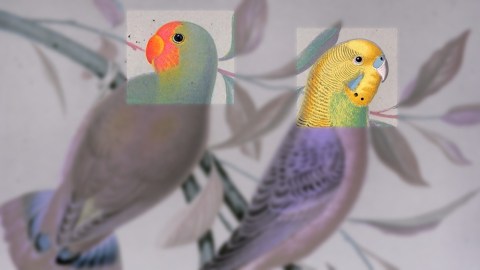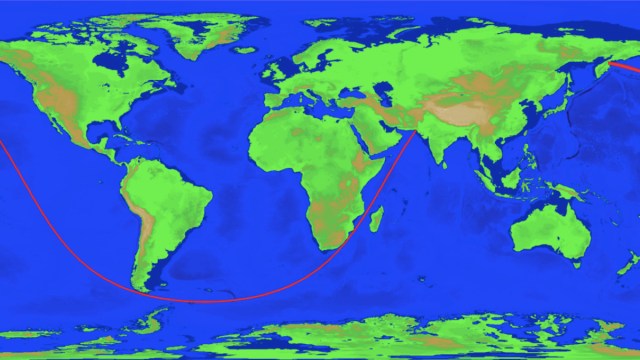Visual thinking: How to understand the inner lives of animals

- In Visual Thinking, animal behaviorist Temple Grandin explores how visual thinking works in the brains of humans and other animals.
- This excerpt of the book explores visual thinking in animals.
- People tend to privilege verbal over visual thinking, yet some of humanity’s most consequential creations came from visual thinking.
It always struck me as ridiculous to think that a dog or a cow does not have consciousness, yet people continue to debate the subject. Aristotle believed that what set men above animals was the ability to reason. Where humans were capable of perception and rational thinking and communicated through language, animals were driven by sensation and impulse.
The Bible includes passages that indicate that animals, like humans, feel pain and deserve rest. In Deuteronomy (22:10), for instance, it is forbidden to yoke a donkey and an ox together to plow a field. Another passage, in Exodus (23:12), states that working donkeys and oxen are to be rested on the Sabbath. The Quran (6:38) has a lovely verse observing that all animals form and need community: “All living beings roaming the earth and winged birds soaring in the sky are communities like yourselves.” From our earliest writings, the stage is set for the ongoing debate about whether animals think and feel, and how we think and feel about them.
Throughout this book, I’ve made the point that the greatest obstacle in understanding visual thinking is knowing it exists. Nowhere is that obstacle greater than in comprehending the inner lives of animals. Just as we’ve underestimated and underutilized the talents and contributions of humans who are visual thinkers, we have similarly underestimated and misunderstood thought in animals. Animals live—and think—through their senses. Without verbal language, they store memories of previous experiences as pictures, sounds, smells, tastes, or touch memories. Sensory‑based thinking and memories are recollections of experiences without words. Grazing or herbivorous animals, including cattle, antelopes, giraffes, elk, and deer, use visual dominance to detect threats; they are constantly on the lookout for predators. In Thinking in Pictures, I wrote extensively about my connection to prey animals, namely cattle. I identified the ways in which my alert system was similarly organized to theirs. We all share some of these “animal instincts,” even if our visual sense isn’t dominant. We don’t need words to tell us when a strange car is in the driveway. We “sense” danger.
Octopuses, with their sensory systems wired into their tentacles, rely on touch as well as taste and smell; canids, from wolves to dogs, live through their sense of smell, coupled with high‑frequency hearing. I tell people to stop yanking their dog’s leash when they linger around a tree or hydrant. A dog is a highly social animal. Smelling stuff, especially pee, is how they get their information. I’ve been known to call it “pee‑mail.” I remember reading about a wine steward who could apparently identify two thousand kinds of wine by smell; that’s about as close as a human can get to a dog’s sense of smell. A dog has three hundred million olfactory receptors compared with our six million. Their smell center in the brain is forty times greater than the equivalent part of the human brain, proportionally. An animal’s senses inform and determine its skill set.
Even an insect brain can differentiate between same and different. Bees can learn to distinguish between colors and lattice patterns that are the same or different. Some animals’ brains create categories with distinct boundaries. Jessie Peissig at California State University, Fullerton, and her colleagues found that pigeons will spontaneously group shapes into categories, a skill generally thought to distinguish human cognition. Shigeru Watanabe from Keio University in Japan found that pigeons could learn to tell a Monet painting from a Picasso, even when shown a painting they had not previously viewed. I imagine the reason why birds developed this skill is adaptive; they need to be able to identify their surroundings. Squirrels use visual thinking to “remember” where they hid their nuts, just as ants have visual memories they use to find their way back to the nest. S. P. D. Judd and T. S. Collett, from the Sussex Centre for Neuroscience at the University of Sussex in the UK, discovered that when ants go out on foraging trips, they will stop along the way and “snap a photo” of a new food source multiple times from different angles. They will also turn back multiple times to look at the landmark on their way back to the nest.
Though animals vary in their display of temporal and spatial understanding, it is obvious that all mammals and birds know where their den or nest is located, and they develop a general sense of where plentiful food may be found. Squirrels use visual memory to find nuts they have stored, and corvid birds such as crows can remember where they have hidden food and how long it has been there. Jays know that delicious worms rot faster than nuts. They know that they must go back and eat the worms more quickly than a less perishable food, just as we empty our fridge before the pantry.
The human habit of privileging verbal thinking over visual thinking often extends to animals despite evidence that language had nothing to do with some of humankind’s earliest and most impressive achievements. Attaching a stone blade to a stick to create a spear, one of the first complex tools, was invented long before language evolved. A recent study by Dana Cataldo and colleagues from University College London investigated how our ancestors might have created stone blades. Novices were divided into two groups. The first group had an expert flintknapper who both demonstrated how to make the tools and verbally explained the process. The second group had the same instructor, but there was no spoken instruction. The students had to observe the instructor, who used nonverbal cues such as pointing or showing how to hold the rock. The novices who were in the nonverbal group performed better at learning the task. Nonverbal, sensory‑based learning may have played a significant role in early human achievement, an idea worth thinking about as it relates to the cognition and achievement of other animals.





